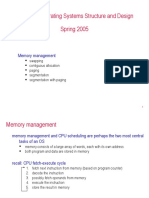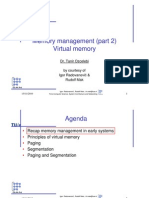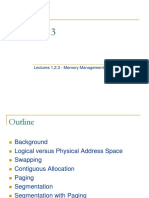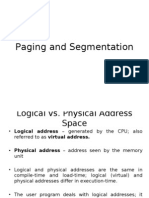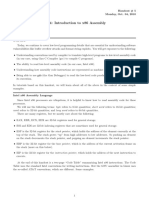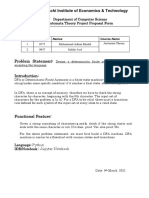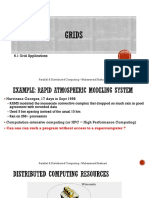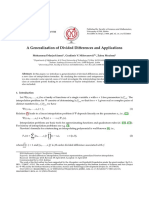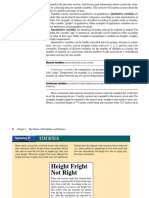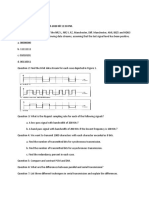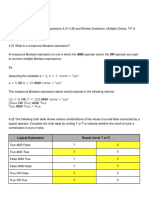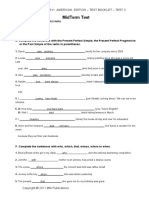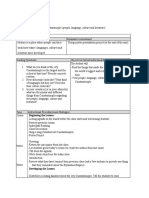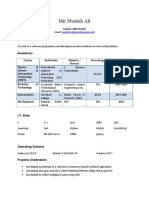0% found this document useful (0 votes)
29 views3 pagesPaging Implementing Paging: Not Have To Be Loaded Into A Contiguous
Paging divides processes into fixed-size pages that are stored non-contiguously in physical memory frames. A page table tracks which frame each page of a process is stored in. Compared to segmentation, paging makes memory allocation and swapping easier by allowing pages to be placed anywhere in physical memory without external fragmentation. Hardware support for paging is similar to but slightly less than segmentation, as page tables replace the need to track segment limits.
Uploaded by
Muhammad Adnan KhalidCopyright
© © All Rights Reserved
We take content rights seriously. If you suspect this is your content, claim it here.
Available Formats
Download as PDF, TXT or read online on Scribd
0% found this document useful (0 votes)
29 views3 pagesPaging Implementing Paging: Not Have To Be Loaded Into A Contiguous
Paging divides processes into fixed-size pages that are stored non-contiguously in physical memory frames. A page table tracks which frame each page of a process is stored in. Compared to segmentation, paging makes memory allocation and swapping easier by allowing pages to be placed anywhere in physical memory without external fragmentation. Hardware support for paging is similar to but slightly less than segmentation, as page tables replace the need to track segment limits.
Uploaded by
Muhammad Adnan KhalidCopyright
© © All Rights Reserved
We take content rights seriously. If you suspect this is your content, claim it here.
Available Formats
Download as PDF, TXT or read online on Scribd
/ 3




